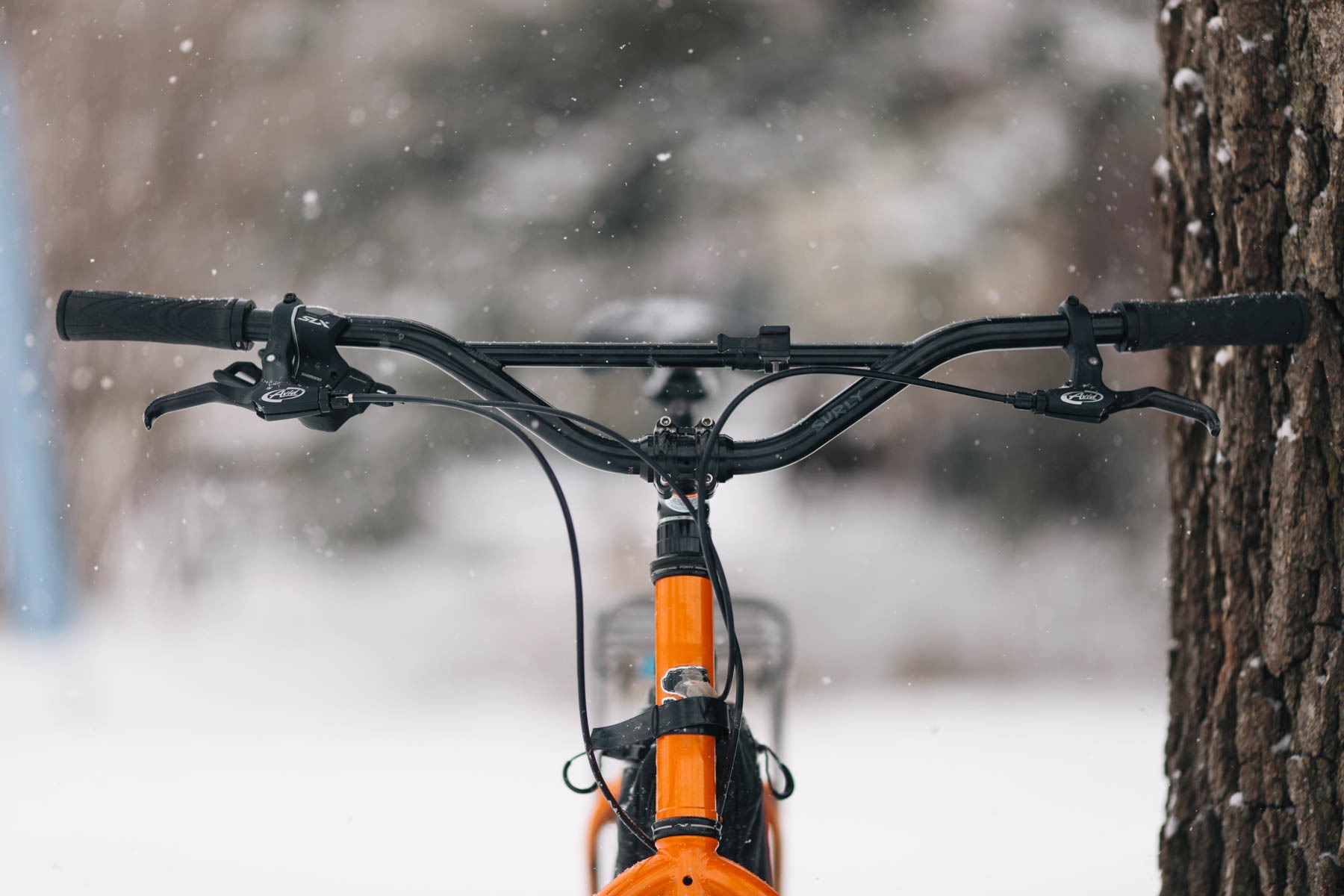Introduction
Choosing the right mountain bike handlebars is essential for optimizing your ride and ensuring a comfortable cycling experience. Handlebars impact not only the bike’s handling but also your overall posture, control, and safety on the trails. As a bike enthusiast, understanding the nuances of handlebars can significantly enhance your riding experience, making it crucial to know what options are available and how to select the best ones for your needs.
In this guide, we will discuss different types of mountain bike handlebars, their functions, advantages, and tips for setting them up correctly. We will also consider how handlebars fit into your overall biking setup and the importance of matching your handlebars to your riding style and preferences. Whether you are a seasoned cyclist or a beginner, this exploration of handlebars will empower you to make informed choices that enhance your mountain biking journey.
Understanding the Anatomy of Mountain Bike Handlebars
Before diving into the various types, it is vital to understand the anatomy of mountain bike handlebars. Typically, handlebars consist of three main parts: width, rise, and sweep.
1. Width
The width of the handlebars significantly affects your bike’s handling and your riding posture. Wider handlebars generally provide better stability, improving control on technical trails. In addition, they allow for a more confident grip when navigating challenging terrains. Conversely, narrower handlebars can enhance aerodynamics and are often favored for cross-country riding where efficiency and speed on flat sections are crucial.
Furthermore, it is essential to balance comfort and control based on your shoulder width. A good rule of thumb is to choose handlebars that align with your shoulders. This ensures an optimal grip and reduces unnecessary strain on your arms during extended rides.
2. Rise
The rise refers to the vertical height of the handlebars in relation to the bike’s frame. Handlebars with higher rises elevate the rider’s position, promoting an upright posture that can reduce strain on the back. This is particularly beneficial for those who spend long hours on the bike or are prone to fatigue.
In contrast, lower rises deliver a more aggressive riding stance suited for downhill biking and aggressive trails. Riders who prefer more speed and less drag often choose handlebars with a lower rise to maintain a streamlined form. Ultimately, the choice will depend on personal comfort and riding style.
3. Sweep
Handlebar sweep is measured in degrees, indicating how back or forward the handlebars are angled. A positive sweep allows the wrists to remain neutral, reducing fatigue over long rides. This angle also provides a more comfortable hand position, which becomes increasingly important during extended trail riding sessions.
When considering sweep, remember that it can significantly impact how your body engages with the bike. Handlebars with a more aggressive sweep encourage a forward-leaning position, allowing for quicker maneuvering. However, too aggressive of a sweep can lead to discomfort. Therefore, it’s vital to test handlebars to see which sweep feels most natural during your rides.
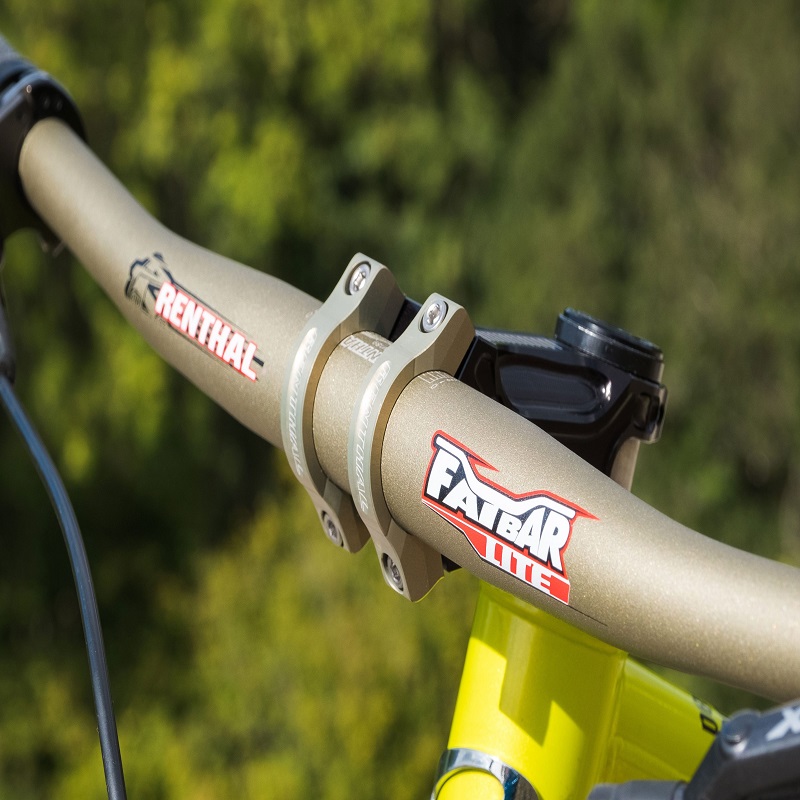
Types of Mountain Bike Handlebars
When it comes to mountain bike handlebars, various types cater to specific riding styles and preferences. Below are the most popular types you should be aware of:
1. Flat Handlebars
Flat handlebars showcase a simple design with minimal rise. They are favored for cross-country biking due to their lightweight nature and aerodynamic advantages. Moreover, they offer excellent control when navigating technical trails, although they may not provide much comfort for prolonged rides.
Flat handlebars tend to keep a rider’s weight evenly distributed, which allows for superior handling. They are also relatively easy to maneuver, making them a preferred choice for riders who like tight cornering. However, cyclists should be aware that they place the rider in a more forward position, which could lead to fatigue during long rides on uneven terrain.
2. Riser Handlebars
Riser handlebars are designed with an upward sweep, which raises the grips above the level of the stem. This design encourages a more upright riding position, making them comfortable for longer rides. Riders who experience discomfort in their back or wrists may find a notable improvement in comfort when switching from flat to riser handlebars.
Riser handlebars are particularly popular among trail and all-mountain riders, as they provide excellent control without sacrificing comfort. Additionally, the extra leverage from riser handlebars can enhance confidence when tackling descents or rough terrain, allowing for greater maneuverability.
3. Drop Handlebars
Commonly found on road bikes, drop handlebars can also be used in mountain biking, particularly in long-distance or endurance settings. While they are less common for off-road use, drop handlebars can enhance aerodynamics and provide multiple hand positions. This can be beneficial for riders who go on extended journeys or races, allowing them to switch their grip for comfort.
However, drop handlebars demand a different riding technique compared to flat or riser handlebars. The forward-leaning position can make navigation tricky on technical trails, which is why they are generally reserved for certain riding situations.
4. BMX Handlebars
BMX handlebars are a solid choice for riders looking for strength and durability. Typically wider and constructed from sturdy materials, they are ideal for riders who engage in tricks, jumps, and other aggressive styles. In addition, they provide excellent control for stunts and jumps, making them a favorite among BMX enthusiasts.
These handlebars often come with a height option that allows riders to customize their stance according to their preferences. BMX handlebars also tend to be very rigid, providing a direct transfer of input to the bike during dynamic movements.
5. Cruiser Handlebars
Cruiser handlebars, also known as “beach bars,” offer a laid-back riding posture. While they are typically associated with casual riding, they can be effective for leisurely rides on smooth trails where comfort takes precedence over speed and agility.
The design promotes an upright body position, which can be beneficial for riders looking to enjoy scenic rides without the need for aggressive maneuvering. Cruiser handlebars shine particularly during casual outings or short trips around town.
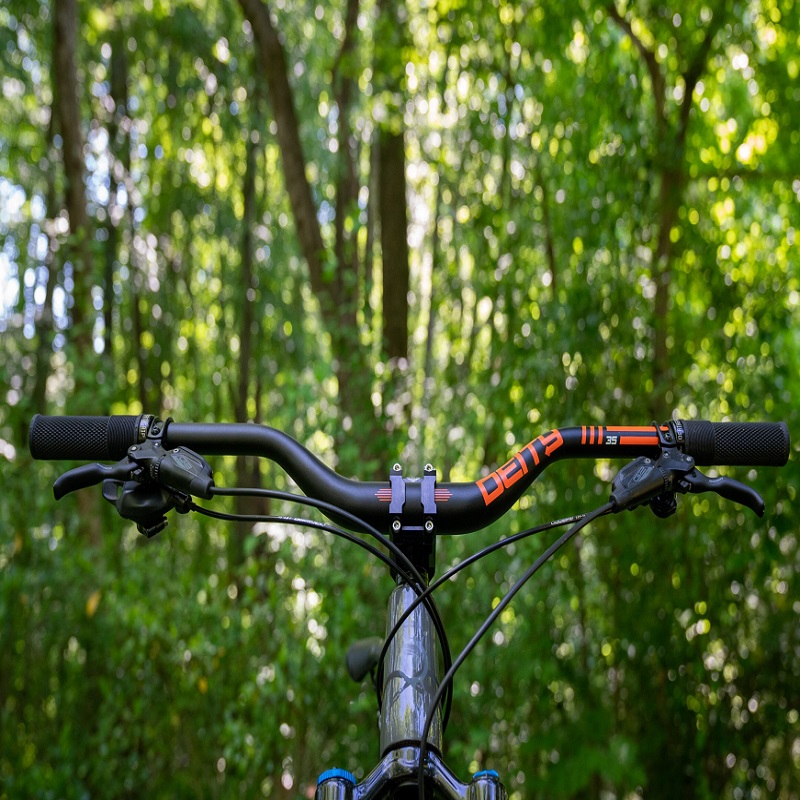
Factors to Consider When Choosing Handlebars
Choosing the right mountain bike handlebars involves considering several factors beyond just type. Here, we will discuss critical aspects that should influence your decision.
1. Riding Style
Your preferred riding style is the most crucial factor when selecting handlebars. If you often ride on technical trails, consider wider riser handlebars for improved control. Conversely, if you are into cross-country racing, flat handlebars may be more beneficial for aerodynamics. Each riding style places different demands on your bike setup, particularly on the handlebars.
Moreover, assess how often you encounter climbs, descents, or obstacles in your typical rides. Riders who frequently navigate technical terrains might prioritize different features than those who stick to flatter paths.
2. Comfort
Comfort is paramount, especially for long-distance rides. If you find yourself frequently experiencing fatigue or discomfort in your wrists or back, look for handlebars that allow for an upright position or have a significant sweep. In general, test various handlebar types in-store or during a demo event to find the most comfortable option.
As you evaluate comfort, consider the thickness of the grips as well. Thicker grips may provide added comfort but could also feel cumbersome depending on your preference.
3. Material and Durability
Most handlebars are constructed from aluminum or carbon fiber. Aluminum handlebars are generally more affordable and offer decent durability, making them a popular choice for many riders. However, they tend to be heavier than carbon fiber options.
On the other hand, carbon fiber handlebars provide superior strength-to-weight ratios, making them lighter but usually at a higher price point. Riders looking for performance and weight savings might invest in high-end carbon fiber handlebars. Especially for downhill riders, the lighter weight can translate to better control and handling during aggressive descents.
4. Stem and Compatibility
Ensure that the handlebars you select are compatible with your bike’s stem. Different handlebar diameters may require specific stems, which can affect your bike’s overall performance. Common diameters include 31.8 mm and 25.4 mm, so double-check your bike’s specifications before making a purchase.
5. Budget
Lastly, consider your budget. Handlebars come at various price points depending on quality and materials. Determine how much you are willing to spend, and keep in mind that investing in quality handlebars can greatly enhance your riding experience.
While all components of your bike matter, handlebars directly impact your comfort and control, making them worth the investment.
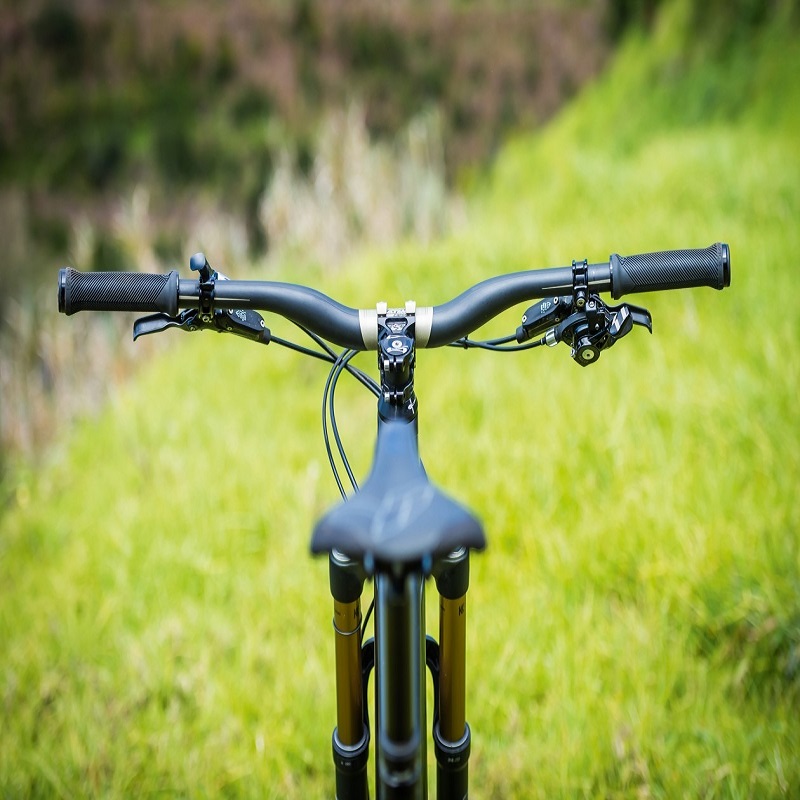
How to Set Up Your Handlebars
Once you’ve selected the right mountain bike handlebars, the next step is to set them up correctly for optimal performance. A proper setup will improve your comfort and handling on the bike.
1. Adjusting Height
The height of the handlebars should ensure that your wrists remain neutral while riding. To achieve this, start by measuring from the top of the saddle to the handlebars while standing next to the bike. Generally, the ideal height keeps the handlebars approximately level with your saddle. Lower handlebars contribute to a more aggressive stance, while higher bars enable a more relaxed posture.
2. Correct Width
The ideal width for your handlebars depends on your shoulder width. As a rule of thumb, select handlebars that align with your shoulders to maintain control and prevent strain. If the handlebars are too narrow, they can make handling challenging; if too wide, they can cause fatigue on long rides.
3. Optimizing Sweep
Setting the correct sweep impacts wrist comfort. Adjust the angle of the handlebars according to your preference for a neutral wrist position, ensuring that your hands don’t feel strained during long rides.
4. Install Accessories
Once your handlebars are properly set up, consider installing accessories such as grips, bar ends, or handlebar tape for added comfort. Grips should feel comfortable in your hands and provide sufficient traction without being too aggressive.
- Handlebar Grips: Choose grips that suit your style of riding and comfort preference. There are various materials and shapes available, such as foam grips and rubber grips, to cater to different feels.
- Bar Ends: If you tend to go for extended rides, bar ends can help by providing additional hand positions. This feature can enhance comfort during long sessions, allowing you to shift your grip as needed.
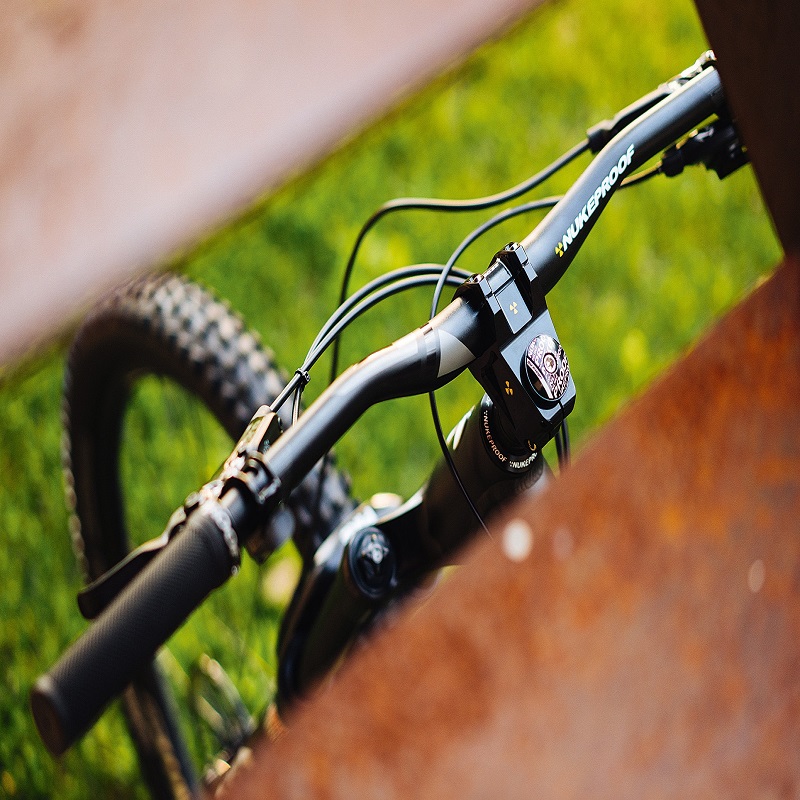
Maintenance Tips for Mountain Bike Handlebars
To ensure longevity and optimal performance, maintaining your mountain bike handlebars is essential. Regular inspections and simple upkeep can help prolong their lifespan.
1. Regular Inspections
Check your handlebars regularly for signs of wear and tear. Inspect the grips for cracks, the stem for looseness, and the handlebars for any signs of bending or structural damage. Addressing these issues early can prevent accidents and ensure your biking experience remains enjoyable and safe.
2. Tightening Bolts
Ensure that bolts on the stem and any accessories are properly tightened. Loose components can lead to instability and handling issues while riding. In general, inspect these connections after each ride to maintain safe operation.
3. Clean and Lubricate
Keep your handlebars clean by wiping them down regularly. If you have grip tape, replace it if it becomes worn. For adjustable stems, consider using lubrication occasionally to prevent corrosion and ensure the optimal functionality of moving parts.
4. Replace When Necessary
If you notice your handlebars bending or experiencing structural failure, consider replacing them without delay. Riding with compromised handlebars poses risks to your safety and can drastically impact your handling on the bike.
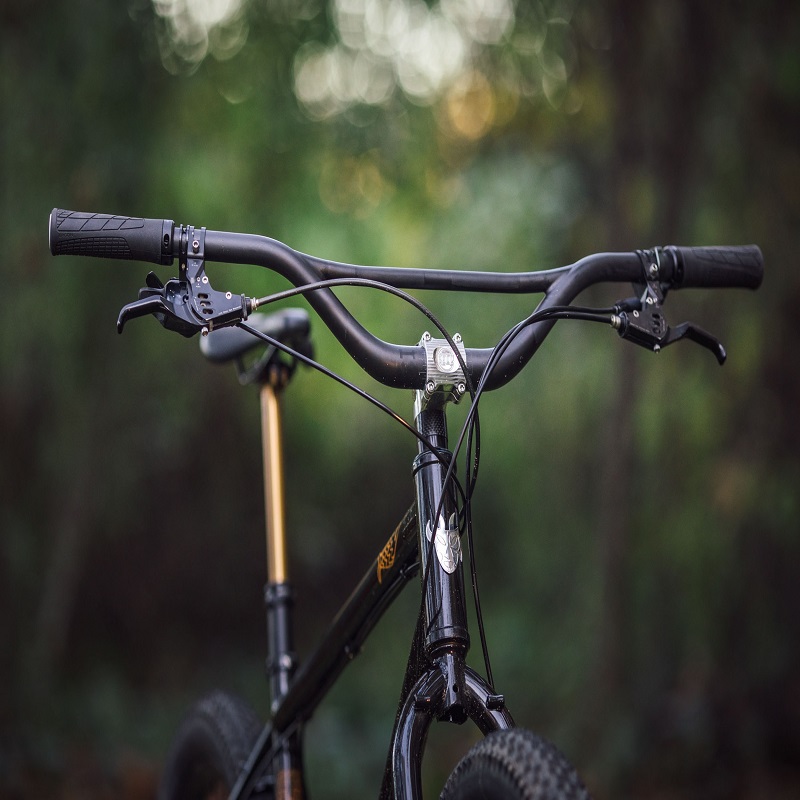
Enhancing Your Riding Experience with the Right Handlebars
In conclusion, selecting the ideal mountain bike handlebars is a critical component of your overall mountain biking experience. By understanding the anatomy, types, and essential factors involved in your decision, you can make informed choices that align with your riding style and comfort needs.
Moreover, once you’ve installed and maintained your handlebars correctly, you will optimize your handling, enhance your comfort, and ultimately enjoy a better ride. Whether you’re navigating technical trails or cruising through scenic routes, the proper set of handlebars can make all the difference. Take the time to explore your options, install them correctly, and invest in handlebars that best suit your cycling journey!
